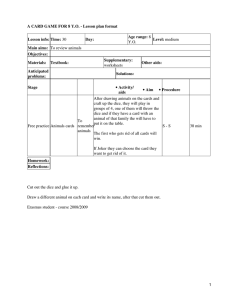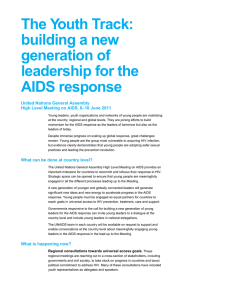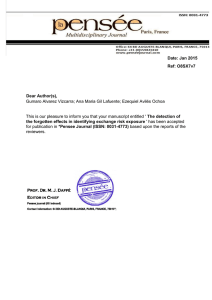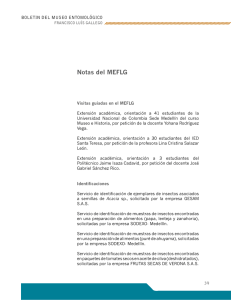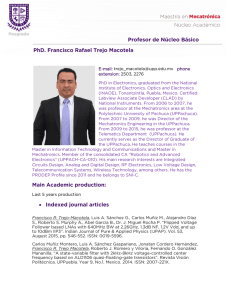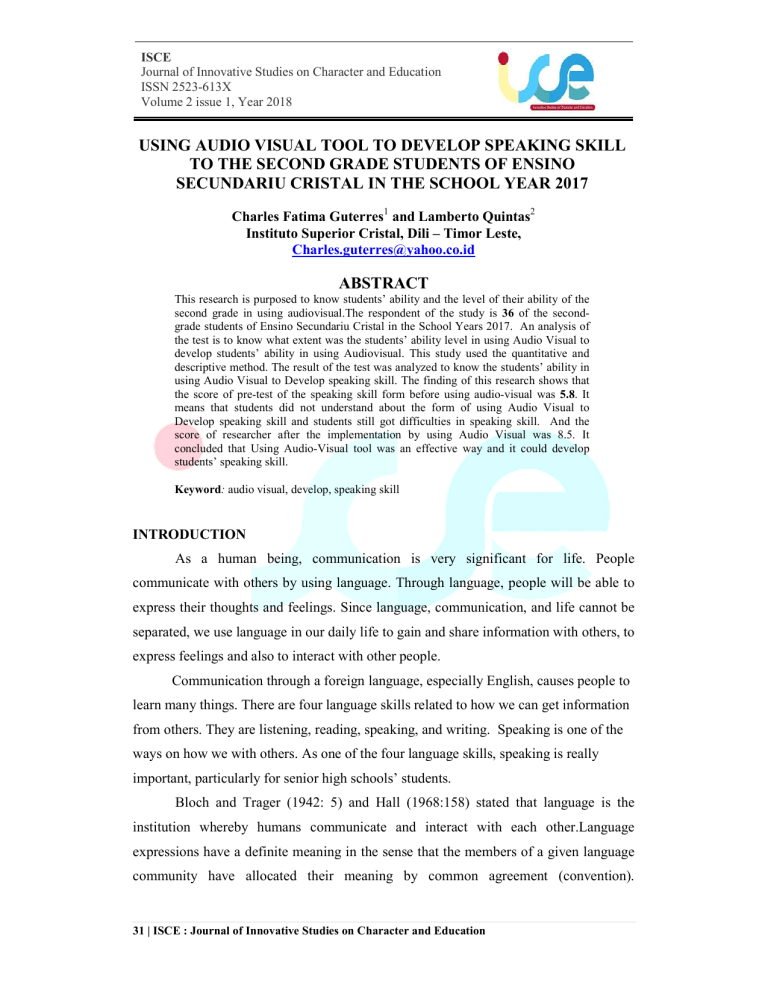
ISCE Journal of Innovative Studies on Character and Education ISSN 2523-613X Volume 2 issue 1, Year 2018 USING AUDIO VISUAL TOOL TO DEVELOP SPEAKING SKILL TO THE SECOND GRADE STUDENTS OF ENSINO SECUNDARIU CRISTAL IN THE SCHOOL YEAR 2017 Charles Fatima Guterres1 and Lamberto Quintas2 Instituto Superior Cristal, Dili – Timor Leste, [email protected] ABSTRACT This research is purposed to know students’ ability and the level of their ability of the second grade in using audiovisual.The respondent of the study is 36 of the secondgrade students of Ensino Secundariu Cristal in the School Years 2017. An analysis of the test is to know what extent was the students’ ability level in using Audio Visual to develop students’ ability in using Audiovisual. This study used the quantitative and descriptive method. The result of the test was analyzed to know the students’ ability in using Audio Visual to Develop speaking skill. The finding of this research shows that the score of pre-test of the speaking skill form before using audio-visual was 5.8. It means that students did not understand about the form of using Audio Visual to Develop speaking skill and students still got difficulties in speaking skill. And the score of researcher after the implementation by using Audio Visual was 8.5. It concluded that Using Audio-Visual tool was an effective way and it could develop students’ speaking skill. Keyword: audio visual, develop, speaking skill INTRODUCTION As a human being, communication is very significant for life. People communicate with others by using language. Through language, people will be able to express their thoughts and feelings. Since language, communication, and life cannot be separated, we use language in our daily life to gain and share information with others, to express feelings and also to interact with other people. Communication through a foreign language, especially English, causes people to learn many things. There are four language skills related to how we can get information from others. They are listening, reading, speaking, and writing. Speaking is one of the ways on how we with others. As one of the four language skills, speaking is really important, particularly for senior high schools’ students. Bloch and Trager (1942: 5) and Hall (1968:158) stated that language is the institution whereby humans communicate and interact with each other.Language expressions have a definite meaning in the sense that the members of a given language community have allocated their meaning by common agreement (convention). 31 | ISCE : Journal of Innovative Studies on Character and Education ISCE Journal of Innovative Studies on Character and Education ISSN 2523-613X Volume 2 issue 1, Year 2018 Languages are more than just communication symbols which is the accumulation of shared-meaning of common ground. People express their knowledge, experience, and skill through language. It is really acquired by people since they were born. Therefore, languages are a tool of communication in order to send and receive information from a person to a person. English is one of the languages which are considered as an international language to be used by the many people in the world. Besides that, there are many countries and people in the world learn it. However, each country has own reason to learn English whether as the first, second or foreign language.In Timor Leste, English is learned as the foreign language and not as the second language. English is taught as a compulsory subject in every school from elementary up to University level. Based on the constitution of Republic Democratic of Timor Leste article 159 stated that English and Indonesia are legally considered as the working language and Tetum and Portuguese become officials’ language. Therefore, people can’t do their activities or interact with one other without languages in internal or external affairs of the country. Learning English as foreign language learners need to know all components of language skills and sub-skills. There are four (4) components of language skills such as; Listening, Reading, writing and Speaking. People who have a good ability in speaking will be better in sending and receiving information or message from others since most of the real communication is unspoken language. However, good speaking skill is difficult to achieve. It needs a lot of practices and a suitable technique, media or tools to improve the speaking skills. Regarding the difficulties that the teachers might have in teaching speaking, it needs more effort to deal with this particular skill. The difficulties in teaching speaking are also faced by sec0nd-grade students of Ensino Secundaria Cristal Dili. The gap on the students’ background knowledge creates difficulty in teaching English. The teacher proposed that speaking skill is the hardest skill to be taught. Speaking skills are rarely taught in this school. The teacher is less motivated and ran out of ideas in teaching speaking since the students are not motivated and not interested in learning it. The students feel afraid learning English because they 32 | ISCE : Journal of Innovative Studies on Character and Education ISCE Journal of Innovative Studies on Character and Education ISSN 2523-613X Volume 2 issue 1, Year 2018 found it difficult and they are afraid of making mistakes. It is hard to practice one transactional material for one meeting. The teacher feels that it only wasting the time to teach speaking skills for the students so that they only focused on teaching other skills. Spratt, Pulverness, and William (2011:34), stated that speaking is a productive skill, like writing. It involves using speech to express meanings to other people. When people speak, they use different aspects of speaking depending on the type of speaking they are involved in. That is why speaking is a complex activity. From the problems stated above, the researcher observes that there are so many ways to deal with those problems. The students needed the role model so that they can pronounce the words and sentences correctly. It is better to give them examples that can be heard, especially the authentic ones in order to make the students understand and also practice them well. The facilities are ready to use in this school, but the teacher rarely used them. Based on that, the researcher will use audio-visual aids to help the students to develop their speaking skills. The audio-visual aids have an important role to develop the speaking skills of the students because there are so many advantages we can take by using audio-visual aids. Supiyati (2011) stated that practically the use of audio-visual aids is one of the appropriate techniques to develop students’ speaking skills. Through audio-visual aids, the students are more enthusiastic. Students enjoyed the process of teaching and learning more. Teaching speaking using audio-visual aids gives a big chance to the students to speak. THEORETICAL FRAMEWORK Speaking has an important part in human life. People use their speaking skills in order to communicate with others. Speaking is one of four language skills that important to be completed. In EFL learning, of course, the students are not immersed in an English environment. English is learned more as a school subject in addition to other subjects in the formal education. As a result, in the non-English environment, the students have limited opportunities to practice their English outside their school. Cameron (2001: 11) says that speaking is the active use of language to express meanings so that other people can make sense of them. To speak the foreign language in 33 | ISCE : Journal of Innovative Studies on Character and Education ISCE Journal of Innovative Studies on Character and Education ISSN 2523-613X Volume 2 issue 1, Year 2018 order to share understandings with other people requires attention to precise details of the language. A speaker needs to find the most appropriate words and the correct grammar to convey meaning accurately and precisely and needs to organize the discourse so that a listener will understand. Speaking is so demanding, requires the careful and plentiful support of various types, not just support for understanding, but also support for production. Harmer (2007) also states that when speakers want to be able to speak fluently in English, they need to be able to pronounce phonemes correctly, use appropriate stress and intonation patterns and speak in connected speech. They will have to be able to speak in a range of different genres and situations, and they will have to be able to use a range of conversational and conversational repair strategies. They will need to be able to survive in typical functional exchanges, too. There are many definitions of speaking that have been proposed by experts’ in language learning. Brown (2001: 267) states that when someone can speak a language means that he/she can carry on a conversation. In addition, he states that the standard of successful language acquisition is almost always the demonstration of an ability to accomplish pragmatic goals through an interactive discourse with other language speakers. Moreover, Richards and Renandya (2002: 204) state that effective oral communication needs the ability to use the language appropriately in social interactions that involve not only verbal communication but also paralinguistic elements of speech such as pitch, stress, and intonation. In addition, nonlinguistic elements such as gestures, expressions, and body language are required in conveying messages directly without any accompanying speech. Furthermore, as mentioned by Cameron (2001), speaking is the active use of language to express meaning so that other people can make sense of them. A speaker needs to find appropriate words and grammatically correct to convey meaning accurately. Harmer (2001:46) says that speaking happens when two people are communicating with each other. It is clear that the people have reasons to communicate, maybe to say or express something. 34 | ISCE : Journal of Innovative Studies on Character and Education ISCE Journal of Innovative Studies on Character and Education ISSN 2523-613X Volume 2 issue 1, Year 2018 Based on some definitions above, it can be concluded that speaking skill is important in communication. Speaking itself can be said as the skill to use the language to express meanings in order to transfer or to get knowledge and information from other people without neglecting language accuracy. Nunan (1999) stated that there are two main aspects of speaking those are accuracy and fluency. The first is accuracy. It means that the speakers are required to use the correct grammar, vocabulary, and pronunciation. And then, the fluency means that the speakers are required to be able to keep going when speaking spontaneously.However, it does not mean that the speakers need to always speak so fast since sometimes pausing is important to make meaning clear. In addition, Harmer states that there are four necessary language features forspoken production. Those features can be seen below. 1) Connected speech In connected speech, sounds are modified, omitted, or added. To be able to speak effectively, speakers need to be able to not only produce individual phonemes but also to use fluent connected speech. 2) Expressive devices Native speakers of English sometimes change the pitch, stress, vary volume, and speed of particular utterances. The use of these devices contributes to the ability to convey meanings. 3) Negotiation Language We often need to ask for clarification when we are listening to someone else talk. It is important to incorporate types of spoken language into a language course, especially in teaching listening and speaking. Brown described that there are two types of spoken language. 1) Monologue A speaker uses spoken the language for any length of time as in speeches, lectures, news broadcast, etc. In the monologue, the hearer must process long stretches of speech without interruption and the speaker goes on to speak whether the hearer comprehends or not. The monologue is also divided into two, planned and unplanned monologue. The first, planned monologue, such as speeches and other prewritten materials, shows little 35 | ISCE : Journal of Innovative Studies on Character and Education ISCE Journal of Innovative Studies on Character and Education ISSN 2523-613X Volume 2 issue 1, Year 2018 redundancy and quite difficult to comprehend. On the other hand, unplanned monologue, such as impromptu lectures reveals more redundancy. There are different materials and teaching aids that could help students to enhance their speaking abilities for effective communication. Using these materials is the only way to bring the natural language of native speakers into the classroom. The audio-visual aids are very important tools because they facilitate both the learning and the teaching process. Moreover, they provide exposure to spoken English, so students get different information about grammar, intonation, vocabulary, and pronunciation through listening as well as they see how native speakers use body language when they speak. Furthermore, these aids motivate students and help them to understand as well as to perform well when they speak. Audio-visual aids are useful materials which help both teachers and students in the teaching and learning process. Many scholars, writers, and websites provide different definitions of audio-visual aids.Kinder S. James (2002) stated that audio-visual aids are any device which can be used to make the learning experience more concrete, more realistic and more dynamic. Burton (2003) states that “audio-visual aids are those sensory objects or images which initiate or stimulate and reinforce learning." In addition, Carter.V.Good defines "audiovisual aids are those aids which help in completing the triangular process of learning that is motivation, classification, and stimulation." So audio-visual aids are very useful devices because they do not facilitate the learning process only, but they motivate students and make the course interesting. According to Good's dictionary of education, “audio-visual aids are anything by means of which learning process may be encouraged or carried on through the sense of hearing or sense of sight." Moreover, KP. Neeraja states that “an audio-visual aid is an instructional device in which the message can be heard as well as seen. In the same context, McKean and Roberts add that “audio-visual aids are supplementary devices by which the teacher, through the utilization of more than one sensory channel is able to clarify, establish and correlate concepts, interpretations and appreciations". From these definitions, we conclude that audio-visual aids are important devices which facilitate learning and teaching process. Besides, they help students to acquire the 36 | ISCE : Journal of Innovative Studies on Character and Education ISCE Journal of Innovative Studies on Character and Education ISSN 2523-613X Volume 2 issue 1, Year 2018 foreign language and develop their speaking skill since they give them the opportunity to hear as well as to see the foreign language as it is used by native speakers. Generally, audio-visual aids could be classified into three main categories: the audio materials, the visual aids, and the audio-visual aids. 1. The audio materials Audio materials "are those which can be heard" such as radio, songs, and language laboratory. 2. The visual aids They are useful tools which “are helpful to visualize things". They include pictures, graphs, and printed materials. .3. The audio-visual aids The audio-visual aids are important teaching aids which "can be heard and seen simultaneously" such as a computer, video, and television. These tools are the main focus of our study (Audio-visual aids in teaching, 2010). In order to help students to develop their speaking proficiency, teachers should use audio-visual aids to support learning in the classroom. These kinds of teaching aids are very important for students since it is the only way to provide them with an exposure to the authentic foreign language. So audio-visual aids give students the opportunity to see and to hear the foreign language as it is used by native speakers in real life situations. According to (Audio-visual aids, 2010), there are different purposes and importance of designing and using audio-visual aids in teaching. • Using audio-visual aids makes teaching and learning process effective and more concrete. Audio-visual aids have an instructional role in themselves. • They motivate students and attract their attention. • Saving time in the classroom. • They provide a realistic experience. • They meet student's learning needs. • They save time since they are easy to prepare. (Audio-visual aids in teaching, 2010). 37 | ISCE : Journal of Innovative Studies on Character and Education ISCE Journal of Innovative Studies on Character and Education ISSN 2523-613X Volume 2 issue 1, Year 2018 METHOD The study will be using Classroom Action Research. This study is chosen to implement the teaching technique in the specific class in order to find out solutions to the classroom problems in the teaching of speaking skills. In conducting this research, the researcher will work collaboratively. It is in line with the characteristics of Classroom Action Research proposed by Kemmis and McTaggart (1988). The subjects of the study will be the Second Grade Students of Escola Secundaria Cristal Dili in the school year 2017. The number of subjects is 30 students which compose of 15 females and 15 males. The instrument that uses in this research is a test.The main data needs for this study action, as mentioned previously, collected through the administration of initial reflection, and at the last reflection of the cycle I to the secondgrade students of Escola Secundaria Cristal Dili. FINDINGS AND DISCUSSION Before doing the cycle the researcher collects first data such as the students’ name and score from the first test from the students. It is held on 06 October 2017. The first score is used to measure the student’s ability and it is used to divide into several groups. The score from the pre-test can be seen table below: Table 4.1 Pre Test Scoring No 1 2 3 4 5 6 7 8 9 10 11 12 13 14 15 16 17 18 19 20 21 Student Code LFAS MBRJ AMDCP ZC S EPS J E SS STB LFB NTED AIVO LMLS AEA JMSFM RPVR SFL LCJ BLG APDM HPFC JTS MAS Pre-test score 4 5 6 7 6 5 6 4 6 7 5 6 5 5 4 6 6 6 7 5 6 38 | ISCE : Journal of Innovative Studies on Character and Education ISCE Journal of Innovative Studies on Character and Education ISSN 2523-613X Volume 2 issue 1, Year 2018 22 23 24 25 26 27 28 29 30 31 32 33 34 35 36 Total CSSCT FJL EC FP DMRO CAJS MFJ NBS AVNS LFC NAF JMR ESG NFS ASM 5 6 5 6 7 6 5 6 7 6 7 6 6 6 5 214 Base on the table above, it meant that the students still difficult to develop their speaking skill and then research continue to the next cycle by using Audio Visual. The research considers a meaning score of students from pre-cycle still low. Cycle I Planning In this research, the researcher in the first meeting introducing the topic and gives Pre-test to students. Before conducting the research, the researcher prepared the instruments of research, such as: 1) Sheets of Classroom Observation 2) Camera Action Research On Friday06 October in 2017, the researcher entered the English class, after the researcher opened by introducing the topic of Using the audio-visual tool to develop students speaking skill and checked the student’s attendance list. In the first meeting, it was followed by 36 students in the class. The teacher says a greeting and asks condition of students. Observation Commonly, it can be assumed that most of the students’ had a good result the researcher didn’t need to continue the next cycle to teach more because the students understood well about speaking skill by using Audio Visual “video”. Reflection 39 | ISCE : Journal of Innovative Studies on Character and Education ISCE Journal of Innovative Studies on Character and Education ISSN 2523-613X Volume 2 issue 1, Year 2018 Students conducted and the score is very good for the first cycle after the researcher gave in the class. Table 4.2 Post Test Scoring No 1 2 3 4 5 6 7 8 9 10 11 12 13 14 15 16 17 18 19 20 21 22 23 24 25 26 27 28 29 30 31 32 33 34 35 36 Total Student Name LFAS MBRJ AMDCP ZC S EPS J E SS STB LFB NTED AIVO LMLS AEA JMSFM RPVR SFL LCJ BLG APDM HPFC JTS MAS CSSCT FJL EC FP DMRO CAJS MFJ NBS AVNS LFC NAF JMR ESG NFS ASM Post-test score 8 8 7 9 9 7 9 8 9 10 8 9 7 8 8 8 9 7 9 9 10 9 8 8 9 9 8 8 9 9 9 8 9 10 9 8 306 Based on the table above, it meant that the student’s ability has improved by using video after the researcher implementation in the class action research. 40 | ISCE : Journal of Innovative Studies on Character and Education ISCE Journal of Innovative Studies on Character and Education ISSN 2523-613X Volume 2 issue 1, Year 2018 Table 4.3 The comparison between Pre-Test and Post-Test Students 1 2 3 4 5 6 7 8 9 10 11 12 13 14 15 16 17 18 19 20 21 22 23 24 25 26 27 28 29 30 31 32 33 34 35 36 Dependent means Pre-test 4 5 6 7 6 5 6 4 6 7 5 6 5 5 4 6 6 6 7 5 6 5 6 5 6 7 6 5 6 7 6 7 6 6 6 5 Pre-test = 5,8 Post-test 8 8 7 9 9 7 9 8 9 10 8 9 7 8 8 8 9 7 9 9 10 9 8 8 9 9 8 8 9 9 9 8 9 10 9 8 D 4 3 1 2 3 2 3 4 3 3 3 3 2 3 4 2 3 1 2 4 4 4 2 3 3 2 2 3 3 2 3 1 3 4 3 3 D= 101 D² 16 9 1 4 9 4 9 16 9 9 9 9 4 9 16 4 9 1 1 16 16 16 4 9 9 2 4 9 9 4 9 1 9 16 9 9 D2 = 290 Post-test = 8,5 So the result of the t-test is 38.8 compared with the level of significant .05 and degree of freedom (df) =N-1= 36-1=35. So from the result of t-test is 38.8 is greater than t table is 2. 032. Interpretation: based on the result of the calculation, there are significant Differences between the score pre-test and post-test or before and after the 41 | ISCE : Journal of Innovative Studies on Character and Education ISCE Journal of Innovative Studies on Character and Education ISSN 2523-613X Volume 2 issue 1, Year 2018 implementation using Audio Visual to develop speaking skill to the second-grade students of Ensino Secundariu Crista in the School Year 2017. That’s why the Audiovisual could use to teach English mainly speaking. CONCLUSION Based on the data analysis, that students’ mean score of pre-test was 5.8 and the students’ mean score of post – test was 8.5. It could conclude that the use of audiovisual tool could develop students’ speaking skill. In other words, the level of students’ ability in Using Audio Visual to Develop speaking skill was very good. It meant that many students were really an interest in this innovative method because it could help them to develop their speaking skill. The result of this research can motivate the students to develop their ability in speaking skill. Using Audio Visual “video” to teach speaking could make the students are more enjoy, relax and fun in following the teaching-learning process. The result of this research can support the English teachers to apply this method in teaching speaking skill by using videos. The researcher would understand more about the Audio Visual “Video”. Then, Researcher must expand the knowledge in teaching speaking skill through the other method. REFERENCES Brown, H. D. (2004). Language Assessment: Principles and Classroom Practices.White Plains, NY: Pearson Education. Brown, H. D. (2007). Principles of Language Learning and Teaching, Fifth Edition. San Fransisco: Pearson Education, Inc. Burns. A & Claire, S. (2003). Clearly Speaking Pronunciation in Action for Teachers. Sydney Macquarie University. DeCapua, A. (2008). Grammar for Teachers. New York: Springer Colman, R. (2005). The Briefest English Grammar and Punctuation Guide Ever. Australia: University of New South Wales Press Ltd. Downing, A. & Locke, P. (2006). English Grammar A University Course Second Edition. USA: Routledge 42 | ISCE : Journal of Innovative Studies on Character and Education ISCE Journal of Innovative Studies on Character and Education ISSN 2523-613X Volume 2 issue 1, Year 2018 Dykes, B. (2007). Grammar for Everyone: Practical Tools for Learning and Teaching Grammar. Australia: Australian Council for Educational Research Ltd. Fulcher, G. & Davidson, F. (2007). Language Testing and Assessment. USA and Canada: Routledge. Harmer, J. (2002). The Practice of English Language Teaching. New York: Longman. Hiebert, E.H. & Kamil, M.L. (2005). Teaching and Learning Vocabulary: Bringing Research to Practice. Mahwah, New Jersey: Lawrence Erlbaum Associates, Inc. Huddleston, R. & Pullum, G.K. (2005). A Student's Introduction to English Grammar. New York: Cambridge University Press. Jackson, H. (2005). Good Grammar for Students. London: Sage Publication. Nunan, D. (2004). Task-Based Language Teaching. New York: Cambridge University. Richards, J.C. & Renandya, W.A. (2002). Methodology in Language Teaching: An Anthology of Current Practice. New York: Cambridge University Press. Rozakis, L. (2003). English Grammar for the Utterly Confused. USA: McGraw-Hill Companies, Inc. Sher, B. (2004). Smart Play: 101 Fun, Easy Games That Enhance Intelligence. Canada: John Wiley & Sons, Inc. Thornbury, S. (2002). How to Teach Vocabulary. England: Pearson Education Limited. Wright, A., Betteridge, D., & Buckby. M. (1994). Games for Language Learning, New Edition. Cambridge University Press. 43 | ISCE : Journal of Innovative Studies on Character and Education
